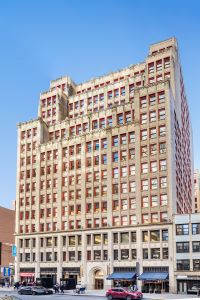 Almost from the moment that the financial industry entered its tailspin a year ago, landlords and developers began to sound the warnings that commercial real estate would be the other shoe to drop in the economy. Then early in the Obama administration, regulators threw the real estate industry a bone, expanding a financial rescue program, the term asset-backed securities loan facility (TALF), to commercial-mortgage-backed securities, thereby muffling calls for a broader industry rescue.
Almost from the moment that the financial industry entered its tailspin a year ago, landlords and developers began to sound the warnings that commercial real estate would be the other shoe to drop in the economy. Then early in the Obama administration, regulators threw the real estate industry a bone, expanding a financial rescue program, the term asset-backed securities loan facility (TALF), to commercial-mortgage-backed securities, thereby muffling calls for a broader industry rescue.
But since, there has been a gradual crescendo of calls for greater intervention by Washington, with property owners and industry groups insisting that a destructive crisis still very much awaits—that is, unless the arms of government come in to cushion the impending blow.
It seems they’re being heard. Top economic officials in the Obama administration have begun to publicly suggest that further action will be needed for the commercial real estate industry.
The push on the subject comes mainly in the form of two separate—but not unrelated—efforts: to mitigate the pain on lenders when the loans for buildings that were traded at absurdly inflated prices come due; and to prevent the plethora of overleveraged apartment buildings from tumbling into disrepair as owners fall behind on debt payments or enter foreclosure.
By the numbers, both issues stand to be highly problematic without—and probably even with—government intervention, particularly for New York City, given that many of the lenders are based here, as are many of the overleveraged buildings. A Deutsche Bank report estimates that at least two-thirds of mortgages in CMBS that mature by 2018—accounting for $410 billion—are unlikely to qualify for a refinancing, risking default. The riskiest are those for buildings traded at the market’s peak, in 2007: Deutsche Bank estimates “well in excess” of 80 percent of the loans from that year are unlikely to qualify.
And a recent report by the Citizens Housing & Planning Council, a think tank for housing issues, estimated that close to 100,000 apartments in New York City are in multifamily buildings bought with loans that have values greater than the buildings are now worth. This is the case with buildings across the city, from Stuyvesant Town to complexes in the South Bronx, where buyers paid prices far greater than the money from current rents justified, banking on hopes that rents would continue to shoot upward. There is concern that once these loans mature—or sometimes before—building owners will stop spending on maintenance, particularly if there is a lengthy foreclosure process, opening the door for a contagious downward spiral of housing disinvestment that was last seen in 1970s New York.
TO THIS END, VARIOUS business and housing groups are trying to craft palatable responses by the federal government, and are supporting existing legislation that would put federal money toward stabilizing some multifamily properties.
“We saw it coming down the pike as yet, potentially, another emerging problem that Congress was going to end up feeling a lot of pressure from,” said Kathryn Wylde, president of the Partnership for New York City, a group working on the issue that represents banks and large businesses.
“We saw the toxic assets were being treated as if they were pieces of paper or financial obligations,” she added, recognizing that a different response was needed for buildings where people live.


